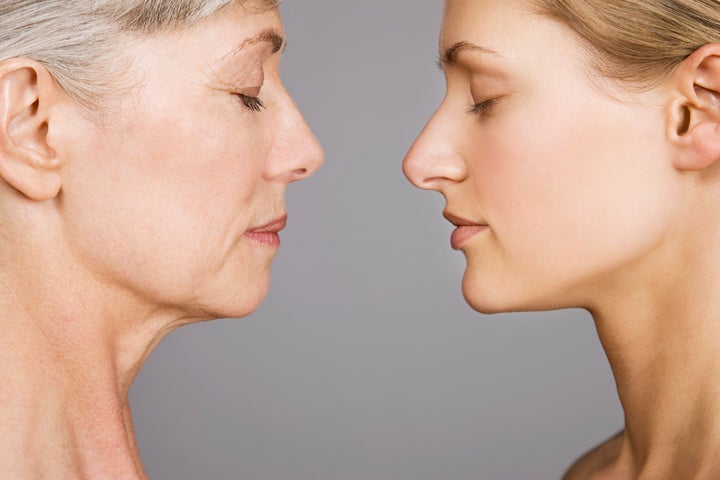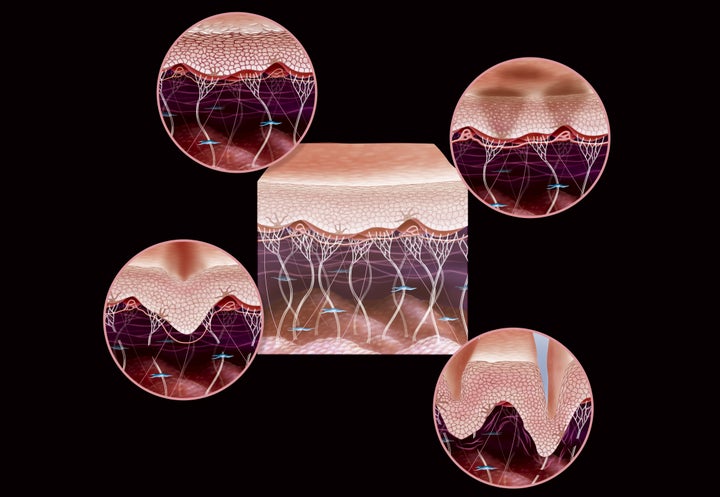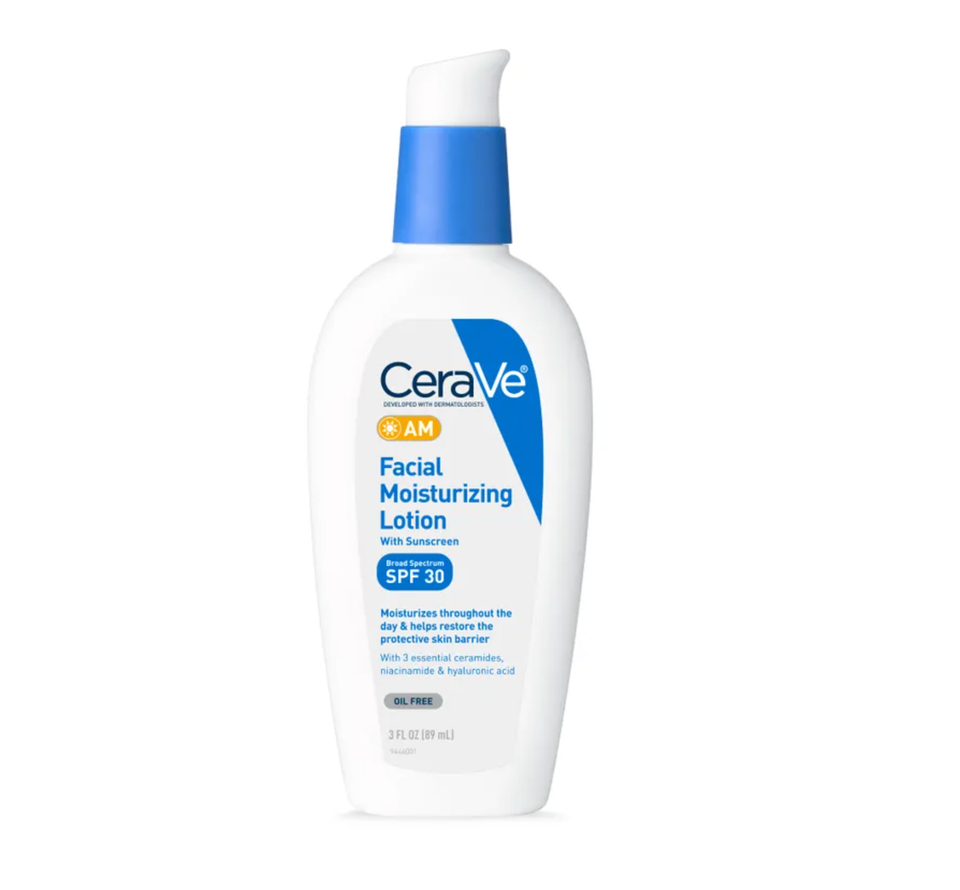
What does the term “nighttime routine” bring to mind? If you’re a skin care aficionado, it may be your favorite part of your everyday routine. But if all the different products available to you feel overwhelming, don’t worry — we’ve enlisted the help of skin care experts to share the perfect nighttime routine for each decade of your life, from your 20s to your 80s.
Our skin changes over time due to various factors such as age, environmental issues, lifestyle changes and more. So it makes sense that the products a 20-something uses aren’t suitable throughout their life, and it’s important to make that distinction to support the skin’s needs. Our skin is our largest organ, after all.
The routines below serve as a general guide, depending on the needs of your skin during each decade of your life ― they cannot, of course, apply to everyone. But here’s one tip that does: Be gentle and have a consistent routine that won’t compromise your skin barrier.
“I always say to my patients: An ounce of prevention is worth a pound of cure. So it is always great to start incorporating key skin care ingredients early on, even before a problem develops,” Marisa Garshick, a board-certified dermatologist at MDCS Dermatology in New York, told HuffPost. She added that new products should only be added one at a time, and they should be layered from thinnest to thickest.
In your 20s
Having a basic, solid routine in your 20s is crucial. You can start by incorporating a retinoid to help with skin texture and to brighten your skin, according to Devan Jesmer, an aesthetician at Skin Remedy MD in north Texas. Plus, retinoids such as adapalene can help with breakouts that many people continue to have in their 20s, said both Jesmer and Garshick.
Even though we are focusing on nighttime routines, it’s worth noting that sunscreen should be part of your daily morning skin care.
“It’s always good to start the habit of sunscreen early and commit to it long term to get the most benefit,” Garshick said. “Sunburns, even in childhood and adolescence, can impact the long-term skin cancer risk.”
All the experts agreed on the importance of double cleansing, which thoroughly cleans the skin and removes makeup and sunscreen. If you’ve got oily skin, opt for a gel or foaming cleanser, and if your skin is on the dry side, choose a creamy or hydrating one, Garshick said. You can use two different cleansers for double cleansing — like a balm followed by a gel — or you can use the same cleanser twice.
Jesmer’s proposed routine in your 20s:
- Cleansing balm: Naturium Purple Ginseng Cleansing Balm
- Gentle cleanser: Paula’s Choice Perfectly Balanced Foaming Cleanser
- Retinol serum: First Aid Beauty Fab Skin Lab Retinol Serum
- A mid-weight moisturizer: CeraVe PM Facial Moisturizing Lotion
Garshick’s proposed routine in your 20s:
- Face wash: Cetaphil Gentle Cleanser for dry skin, The Inkey List Salicylic Acid Cleanser for oily skin
- Toner: Thayers Witch Hazel Facial Toner or Glow Recipe Watermelon Glow PHA + BHA Toner
- Retinol: Differin Gel
- Moisturizer: CeraVe PM Facial Moisturizing Lotion
In your 30s
By your 30s, a stronger retinoid (like retinaldehyde) is advised. A retinoid eye product may also be beneficial, Jesmer said, as well as weekly exfoliation.
“When introducing a retinoid into a skin care routine, it is best to start low and slow, only using it two or three times per week and gradually increasing the frequency,” Garshick said, adding the caveat that retinoids shouldn’t be used if you’re pregnant or breastfeeding. ”For someone with dry or sensitive skin, it may be best to apply the moisturizer prior to the retinoid to reduce the potential for irritation.”
During this decade of your life, “the skin tends to get a little bit drier and collagen levels are starting to slowly decrease, but visible signs of aging are still minimal. The goal is to maintain our collagen stores and even glowy complexion,” Cristina Psomadakis, a dermatologist in London, told HuffPost.
Garshisk explained that we actually lose 1% of collagen every year during our 20s, and this becomes more obvious in our 30s in terms of appearance and fine lines.
Jesmer’s proposed routine in your 30s:
- Cleansing balm: Paula’s Choice Omega+ Complex Cleansing Balm
- Gentle cleanser: La Roche-Posay Toleriane Hydrating Gentle Cleanser
- Retinaldehyde serum: Sachi Skin Ursolic Acid & Retinal Overnight Reform
- Eye cream: Skinbetter EyeMax AlphaRet Overnight Eye Cream
- Cream-based moisturizer: Make Beauty Hibernation Capsule Overnight Recovery Balm
In your 40s
In your 40s, focusing on replenishing collagen production is key.
“If you can get your hands on prescription tretinoin, this is the most powerful form of retinol on the market and available via your dermatologist,” Psomadakis said.
Cell turnover, which is our skin’s ability to renew its cells, slows down with age, and that’s why an exfoliating product might be beneficial. This will help remove dead skin cells from the skin’s surface, and the skin will appear smoother. An exfoliator can be a cleanser, exfoliating pads, toner or serum. If your skin is sensitive, pick your exfoliator carefully, something like mandelic acid or lactic acid, or a polyhydroxy acid such as gluconolactone, Garshick said.
“For those with more normal to oily skin types, glycolic acid or salicylic acid can be considered, respectively,” she said. “It is best to avoid exfoliating the same nights that you use your retinoid to minimize the chance of irritation and to limit exfoliation to one to two times per week.”
Psomadakis’ proposed routine in your 40s:
- Gentle face wash: The Ordinary Squalane Cleanser
- Serum: Sachi Triphala Pigmentation Corrector (on alternate nights with retinoid)
- Retinol: Prescription or SkinBetter Science AlphaRet Overnight Cream
- Cream-based moisturizer: SkinCeuticals Triple Lipid Restore 2:4:2 or The Inkey List Peptide Moisturizer
Garshick’s proposed routine in your 40s:
- Face wash: La Roche-Posay Toleriane Hydrating Gentle Cleanser
- Treatment serum: L’Oreal Paris Revitalift 10% Pure Glycolic Acid Serum or First Aid Beauty Facial Radiance Pads
- Retinol: Drunk Elephant A-Passioni Retinol Cream
- Eye cream/treatment: Wander Beauty Baggage Claim Eye Masks
- Moisturizer: Revision DEJ Face Cream

In your 50s
Skin laxity tends to be a big concern in our 50s, Garshick said, explaining, “People start to notice jowls forming as well as textural changes in the neck.”
It may be beneficial to add a separate neck cream in this decade. Other ingredients that may help include peptides, growth factors and antioxidants like resveratrol and vitamin C.
Garshick’s proposed routine in your 50s:
- Face wash: Dove Beauty Cream Bar
- Serum: Caudalie Resveratrol Lift Instant Firming Serum
- Retinol: Naturium Retinol Complex Serum
- Eye cream: SkinCeuticals A.G.E. Eye Complex
- Neck cream: DRMTLGY Advanced Neck Cream
- Moisturizer: Olay Night of Olay Firming Night Cream
Psomadakis’ proposed routine in your 50s:
- Gentle face wash: Clinique Take The Day Off Cleansing Balm
- Serum: NIOD Multi-Molecular Hyaluronic Complex
- Exfoliator (once or twice a week): Dr. Dennis Gross Alpha Beta Peel Pads
- Retinol: Allies of Skin Retinal & Peptides Repair Night Cream or Olay Regenerist Retinol24 Max
- Cream-based moisturizer: SkinCeuticals Triple Lipid Restore 2:4:2 or Swiss Line Cell Shock Luxe-Lift Rich Cream or CeraVe Night Renewing Cream
In your 60s
“Brown spots and hyperpigmentation are often a concern in your 60s, so while everything else still remains important, it is a good time to consider products and serums that also work to lighten discoloration and reduce pigmentation,” Garshick said.
The ingredients you should look into include antioxidants, alpha arbutin, tranexamic acid, kojic acid, niacinamide and azelaic acid. Retinoids continue to be essential as well as sunscreen in the morning.
Garshick’s proposed routine in your 60s:
- Face wash: Glytone Mild Gel Cleanser
- Serum: SkinBetter Science Even Tone Correcting Serum or Glow Recipe Guava Vitamin C Dark Spot Treatment Serum
- Retinol: Medik8 Crystal Retinal 1, but if retinol cannot be tolerated, then Isdin Isdinceutics Melatonik
- Eye cream: Pond’s Rejuveness Lifting & Brightening Eye Cream
- Neck cream: StriVectin TL Advanced Tightening Neck Cream Plus
- Moisturizer: ReVive Moisturizing Renewal Cream
In your 70s
The skin loses moisture as we age, so we have to replenish that with topical products and moisturizing creams, Garshick said.
“It may also be important to adjust the frequency of exfoliation, as well as the frequency and strength of the retinoid use if the skin begins to feel too dry, and look for products that help to repair the skin barrier,” she told HuffPost.
Garshick’s proposed routine in your 70s:
- Face wash: Neutrogena Ultra Gentle Daily Cleanser
- Serum: Vichy Mineral 89 Prebiotic Recovery and Defense Concentrate
- Retinol: RoC Retinol Correxion
- Eye cream: Colorescience Total Eye Firm and Repair Cream
- Neck cream: Alastin Restorative Neck Complex
- Moisturizer: Neutrogena Hydro Boost Gel-Cream
In your 80s
Hydration is more important than ever at this stage. Garshick recommended ingredients such as hyaluronic acid or glycerin, which contains humectants that will draw moisture in the skin, as well as firming peptides. For cleansing, a micellar might be preferred as a gentler option.
Garshick’s proposed routine in your 80s:
- Face wash: Simple Micellar Cleansing Water
- Serum: PCA SKIN Hyaluronic Acid Boosting Serum
- Retinol: Shani Darden Retinol Reform
- Eye cream: Garnier SkinActive Ultra-Lift Anti-Aging Eye Cream with Pro-Retinol
- Neck cream: Neocutis Neo Firm Neck and Décolleté Tightening Cream
- Moisturizer: SkinFix Barrier+ Triple Lipid-Peptide Face Cream
When in doubt, listen to your skin and consult a skin specialist who will be able to recommend products to suit your specific concerns. Also, remember that active ingredients such as retinoids take eight to 12 weeks of consistent use for noticeable results, so patience and consistency are key. If you catch any signs of irritation or sensitivity, strip back your routine to the basics.
HuffPost may receive a share from purchases made via links on this page. Prices and availability are subject to change.
